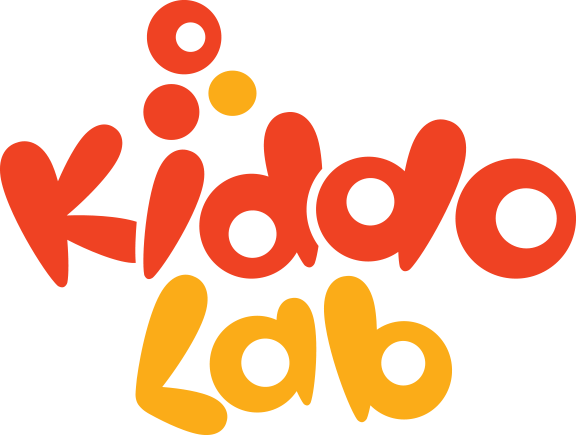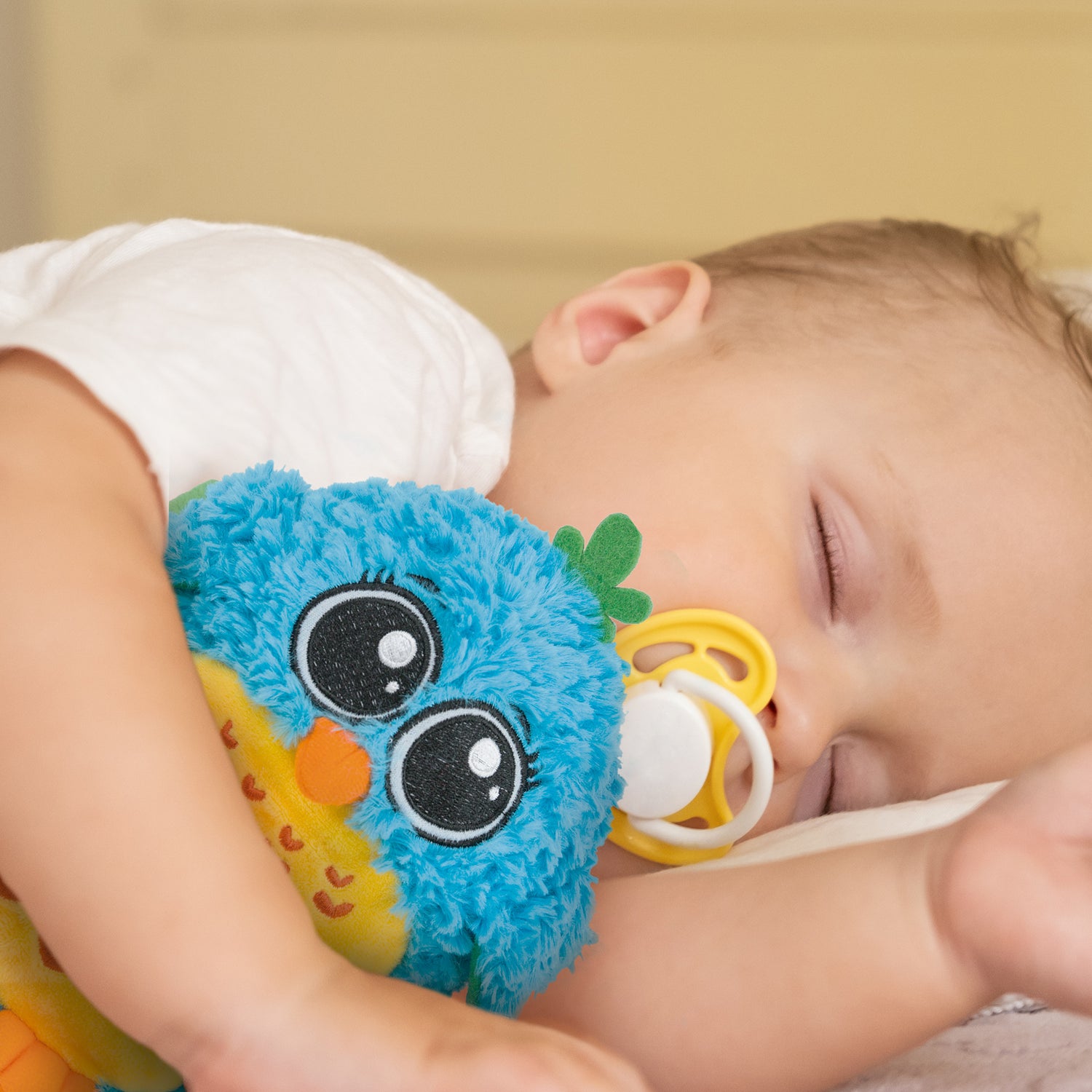In the colorful journey of childhood, art and craft activities stand as pivotal experiences that shape imagination, creativity, and essential developmental skills. Kiddolab, with its innovative range of art and craft toys, offers a vibrant playground for children aged 18 months and up to express themselves while developing crucial abilities.

Jungle Animal Roll & Learn Fun Baby Activity Ball
The Canvas of Imagination: Art and Craft Toys’ Role in Creativity
- Stimulating Creativity: Art and craft toys act as tools for children to express their unique perspectives, fostering an environment where creativity thrives.
- Encouraging Exploration: Through activities like painting, sculpting, or crafting, children explore various materials and techniques, learning to think outside the box.
- Imagination and Visualization: These toys enable children to bring their ideas to life, enhancing their ability to visualize and create mental images.
Fine Motor Skills: Crafting a Foundation for Development
Art and craft activities are not just about creativity; they also play a crucial role in developing fine motor skills.
- Dexterity and Coordination: Activities like cutting, drawing, and molding strengthen hand-eye coordination and dexterity.
- Precision and Patience: Engaging in detailed craftwork teaches children the importance of precision and patience, skills that are valuable in academic and everyday tasks.
- Sensory Development: The tactile experience of handling different materials stimulates sensory development, an essential aspect of early childhood growth.
Steering Wheel Toy
Kiddolab’s Palette: Nurturing Young Artists
Kiddolab’s range of art and craft toys is thoughtfully designed to cater to the diverse creative needs of young children.
- The Kiddolab Art Station: A multipurpose set that offers various artistic tools and mediums, perfect for budding artists to experiment and create.
- Craft Kits for Every Age: Tailored craft kits that align with different developmental stages, ensuring age-appropriate challenges and enjoyment.
- Eco-Friendly and Safe Materials: Understanding the importance of safety, all
Kiddolab art and craft toys are made from non-toxic, environmentally friendly materials.
Nurturing a World of Colors: The Role of Art in Enhancing Creativity and Emotional Well-Being
Broadening Creative Horizons with Diverse Art Activities
Art and craft activities offer a spectrum of opportunities for children to explore their creativity and imagination.
- Diverse Mediums: Encourage children to experiment with various mediums such as painting, drawing, collage-making, and clay modeling. Each medium offers a unique way to express creativity and imagination.
- Theme-Based Projects: Introducing theme-based art projects can stimulate a child's interest in different subjects, from nature to outer space, broadening their creative and intellectual horizons.
- Cultural Exploration: Art activities can be a gateway to exploring different cultures and traditions, fostering a sense of global awareness and appreciation in children.
Emotional Development Through Artistic Expression
Art provides a safe and expressive outlet for children to explore and communicate their emotions.
- Understanding Emotions: Art activities can help children understand and express complex emotions, aiding in emotional literacy and development.
- Therapeutic Benefits: Engaging in art can have calming effects, helping children to manage stress and anxiety in a healthy way.
- Building Empathy: Collaborative art projects can teach children about empathy and understanding by sharing and discussing their artistic creations with others.
Practical Tips for Encouraging Artistic Play
To make the most of art and craft activities, here are some practical tips for parents and educators:
- Creating an Art-friendly Space: Set up a dedicated space where children can freely engage in art activities, making sure it's stocked with a variety of art supplies.
- Encouraging Exploration: Allow children to explore different materials and techniques without fear of making mistakes. The focus should be on the process, not just the end product.
- Displaying Artwork: Showcasing children’s artwork can significantly boost their confidence and sense of accomplishment.
Cognitive Enhancement Through Artistic Exploration
Art and craft activities are not just about creativity; they are a playground for cognitive development and learning.
- Critical Thinking and Problem Solving: When children engage in art projects, they learn to make decisions, solve problems, and think critically about how to bring their ideas to life.
- Language Development: Discussing their art projects helps children enhance their language skills, as they learn to describe their work, express their thoughts, and respond to feedback.
- Memory and Concentration: Art activities require children to focus and remember different techniques and steps, thereby improving memory and concentration skills.
Fine Motor Skill Development with Hands-On Activities
The physical aspect of creating art plays a significant role in developing fine motor skills.
- Hand-Eye Coordination: Drawing, painting, cutting, and sculpting require precise hand-eye coordination, an essential skill that also benefits academic tasks like writing.
- Dexterity and Strength: Handling brushes, crayons, scissors, and other art tools strengthens hand muscles and improves dexterity.
- Sensory Development: The tactile experience of working with different materials like clay, paper, and paint stimulates sensory development, which is crucial in the early years.
Incorporating Art into Everyday Learning
To maximize the benefits of art and craft activities, consider integrating them into regular learning routines.
- Art as a Learning Tool: Use art projects to complement lessons in other subjects, such as science or history, to enhance understanding and retention of concepts.
- Routine Art Sessions: Set aside regular times for art activities to encourage consistency and routine in creative development.
- Encouraging Individual Expression: Give children the freedom to express themselves through their art, without imposing strict guidelines or expectations on the outcome.
Unleashing Potential Through Art: Embracing Creative Development in Childhood
In our exploration of the world of art and crafts, we've seen how these activities are instrumental in developing a child's cognitive abilities, emotional intelligence, and fine motor skills. From fostering creativity and imagination to enhancing problem-solving skills and emotional expression, the benefits of artistic play are vast and varied.
- A Foundation for Lifelong Learning: The skills acquired through art and craft activities lay the groundwork for future academic success and personal growth.
- Emotional and Social Growth: Artistic expression allows children to explore and understand their emotions, fostering empathy and social skills.
- Creativity as a Core Skill: In a rapidly changing world, creativity is not just an art skill but a fundamental capability that supports innovation and problem-solving across various fields.
To cultivate a thriving environment for creative development, here are some actionable steps:
- Provide Diverse Materials: Offer a range of art supplies to stimulate different forms of creativity, from drawing and painting to sculpting and crafting.
- Create a Supportive Environment: Encourage experimentation and freedom in artistic expression, and celebrate each child’s unique creations.
- Incorporate Art in Education: Integrate art activities into educational curriculums and daily routines to enhance learning experiences and make them more engaging.
- Stay Informed and Inspired: Continuously seek new ideas and techniques in art and craft activities to keep the creative spark alive.
The journey of development through art begins with a single brushstroke or a piece of clay. Encourage the children in your life to delve into the world of creativity, and watch as they paint their paths to growth and self-discovery. Remember, every child is an artist; the challenge is to remain one as they grow up.



